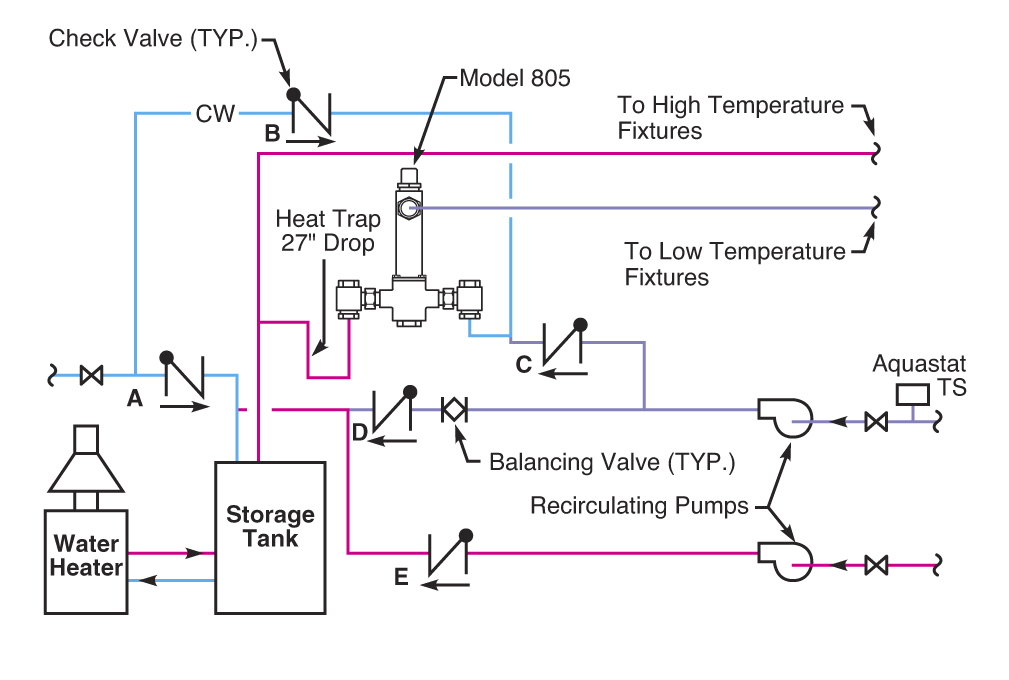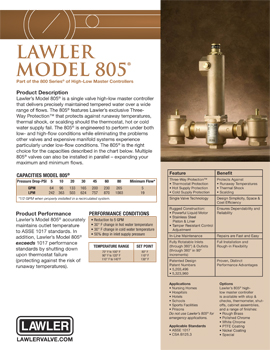Plumbing Topic: Domestic Water Recirculation Systems Part 8
|
“Dual Temperature Systems and Mixing Valves”
“Performance Conditions of a Mixing Valve”
Last week the R L Deppmann Monday Morning Minute article examined the addition of a mixing valve. Today we will examine the re-circulation system with dual temperature requirements and answer questions about the term “Performance Conditions” mentioned in the Lawler literature. Lawler manufactures a wide variety of thermostatic mixing valves, exceeding the ASSE 1017 standards.
|
DUAL TEMPERATURE SYSTEMS:
In the literature for the LAWLER 805 MASTER CONTROLLER shown below, there is a diagram showing the piping when you have a design using dual temperatures. In this operation, Lawler suggests a re-circulating pump from both the low temperature and high temperature system. As we mentioned last week, R. L. Deppmann recommends the use of a balance valve on the discharge of each pump to read and set the total flow rate from the system. |
 |
|
Figure 2 – Click image to enlarge |
 |
PERFORMANCE CONDITIONS:
Imagine you are riding a 5 speed bicycle up an incline and you have set the gear for the incline and effort. You pedal away and work harder if the incline increases a bit and ease off if it drops a bit. You are able to maintain the same speed. But now the incline suddenly rises significantly and a strong wind hits your face. To maintain speed, you must change gears.
The Lawler performance conditions are similar. Our valve is designed to maintain temperature, once it is adjusted, after installation. Just like the bicycle example, the valve will operate fine and maintain temperature as loads change. If there is a significant change from the inlet conditions when the valve was adjusted, the temperature will not remain steady. These significant changes for the Master Controller model 805, shown here, are: a 30°F change in hot or cold water temperatures, a 50% reduction in hot or cold water inlet pressure, or a flow rate below 5 GPM. If any of these conditions occur, the valve may not be able to maintain the set temperature and a manual re-adjustment of the valve may be necessary.
|

|

Disclaimer: R. L. Deppmann and it’s affiliates can not be held liable for issues caused by use of the information on this page. While the information comes from many years of experience and can be a valuable tool, it may not take into account special circumstances in your system and we therefore can not take responsibility for actions that result from this information. Please feel free to contact us if you do have any questions.
Archives – Click here for Past Articles




